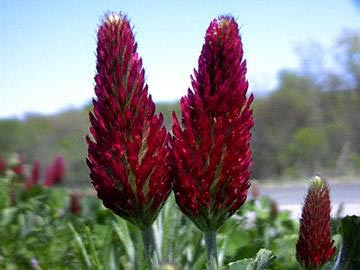 A new study by O.M. Aguilar, a graduate assistant in the Department of Horticultural Sciences at Texas A&M University, confirms what previous studies and parents know: Gardening with children makes them more sensitive to environmental issues. As reported in LOHAS, the study found:
A new study by O.M. Aguilar, a graduate assistant in the Department of Horticultural Sciences at Texas A&M University, confirms what previous studies and parents know: Gardening with children makes them more sensitive to environmental issues. As reported in LOHAS, the study found:
Test results indicated that children that had any type of experience with gardening had more positive attitudes toward the environment when compared with students that had not gardened. The study showed that hands-on gardening activities are important to the development of environmentally concerned citizens, and that children’s involvement in informal gardening experiences has as much impact on their environmental outlook as involvement in formal school-based programs.
My children’s school unfortunately does not have a formal gardening program, yet the teacher uses the school’s garden for her own gardening needs. I try to involve my children in all aspects of home gardening, but sometimes this is challenging when they stomp on tender young plants or accidentally pull one out while weeding. Planting cover crops is an easy task even for the youngest toddler. Just grab a handful and toss the seeds; no need for straight rows or special spacing.
In the fall, I try to ready as much of my garden for next spring by planting cover crops. My favorite cover crop is crimson clover, even though we have to till the plant in before we get the showy display of red flowers for optimum benefit. Cover crops are called green manures, because they fix nitrogen in the soil and add organic matter. There are many benefits to planting cover crops, even in the smallest garden:
- Erosion control: Cover crops help stabilize the soil and prevent runoff during winter storms.
- Adds organic matter: The roots and top growth add matter when tilled in providing seasonal nutrients.
- Weed control: This is one of the main reasons I plant cover crops. My thick, dense planting of clover chokes out many weeds, including invasive blackberries, that take hold while my garden is at rest.
- Increase beneficial insects: Cover crops provide habitat for beneficial insects and feed microbes that fight off disease.
- Add nutrients: Cover crops are a cheap method of adding nutrients into your garden soil. As Organic Gardening explains:
Cover crops cover the soil and prevent excess nitrogen from leaching. Plants take up excess soil nitrogen and return it to the soil when they are turned under. In addition, legumes, such as clover, fix atmospheric nitrogen in special nodules on their roots, in collaboration with Rhizobium bacteria. This nitrogen can be used by the next crop you grow. In this way, cover crops act as a bank account for nutrients, returning the investment with interest when you turn them under.
- A task for young children: As I mentioned previously, scattering cover crop seeds is fun and easy for young hands.
I can’t imagine live without an organic garden, and I think my children will always garden no matter where they live from the years on our homestead. There is nothing more wondrous to a child (and adult) than seeing a plant sprout or tasting food grown with your own two hands. Caring for the soil is important, and cover crops are an easy way to ensure gardening success and include your children in the process!
Image: Oklahoma Biological Survey
[…] helps children learn connection with environment 10 10 2008 Via Eco Child’s Play … “Test results indicated that children that had any type of experience with gardening […]